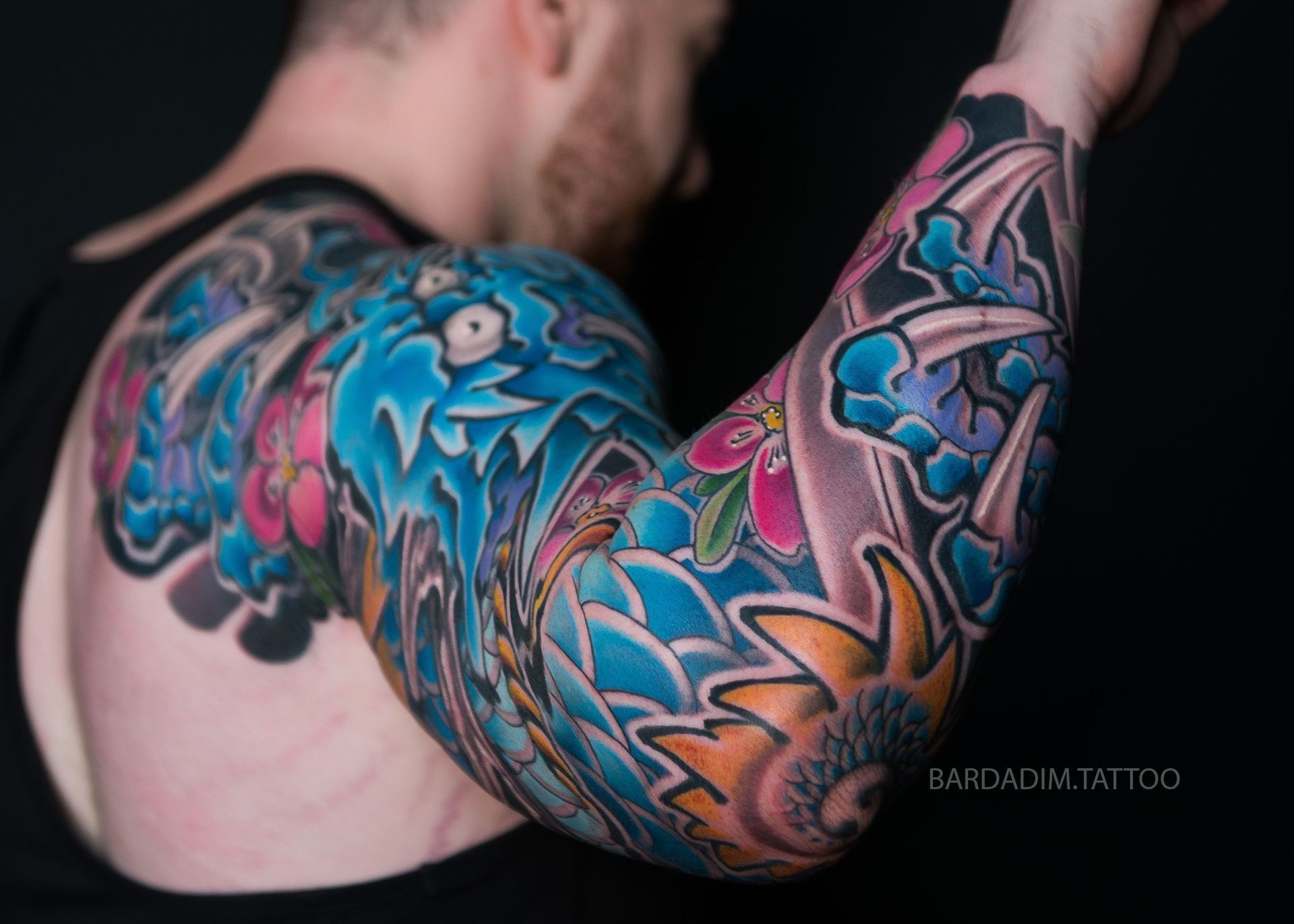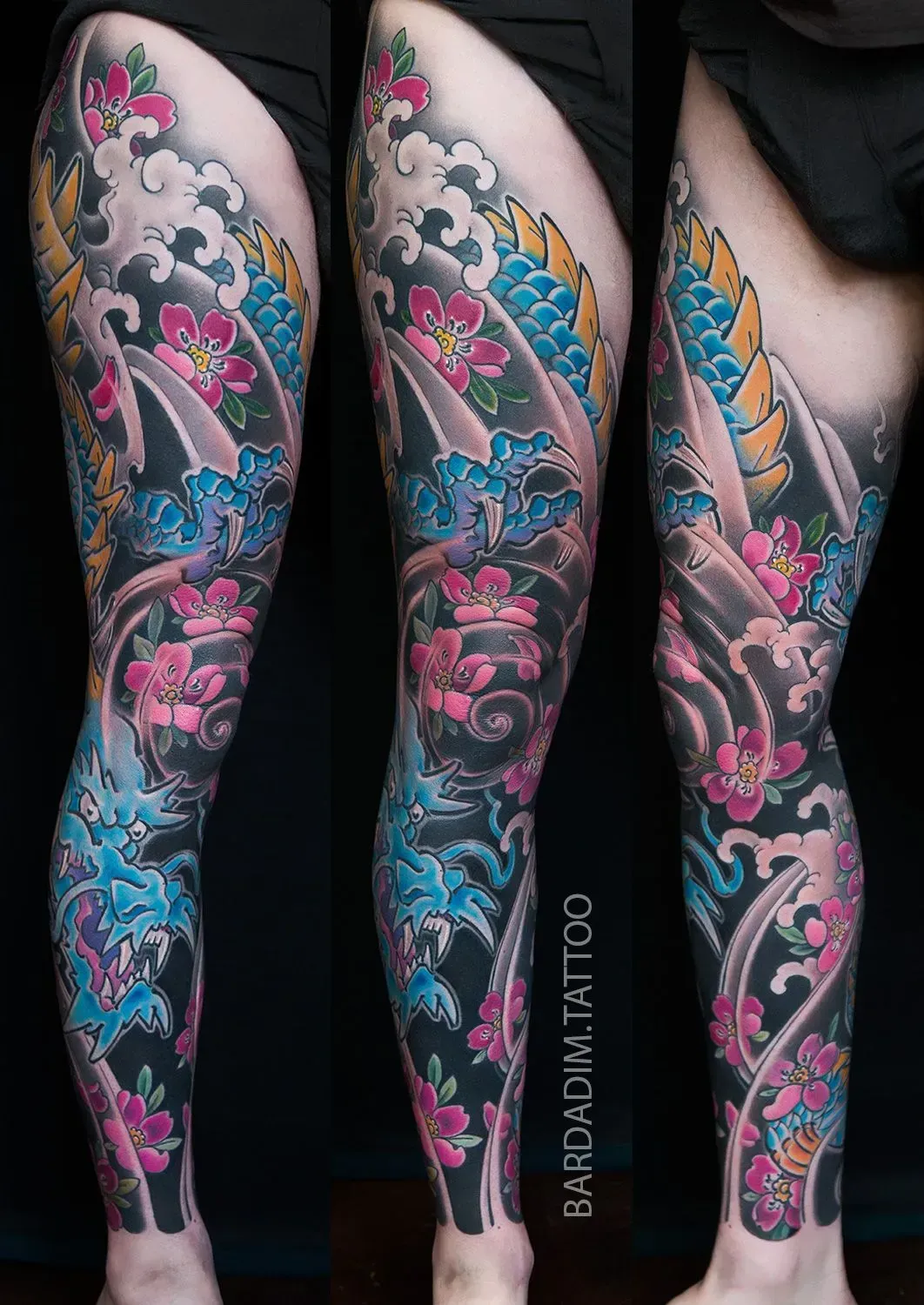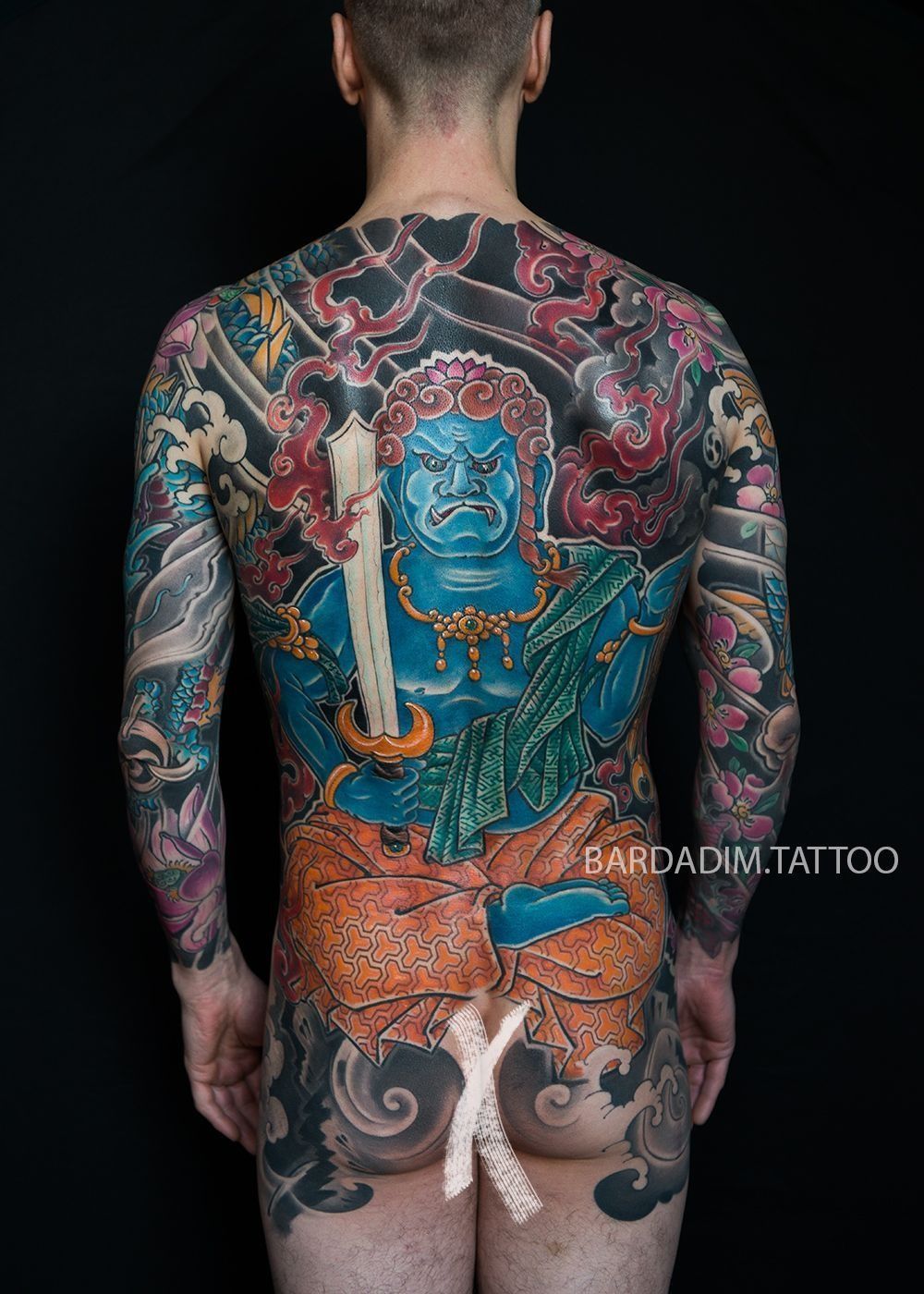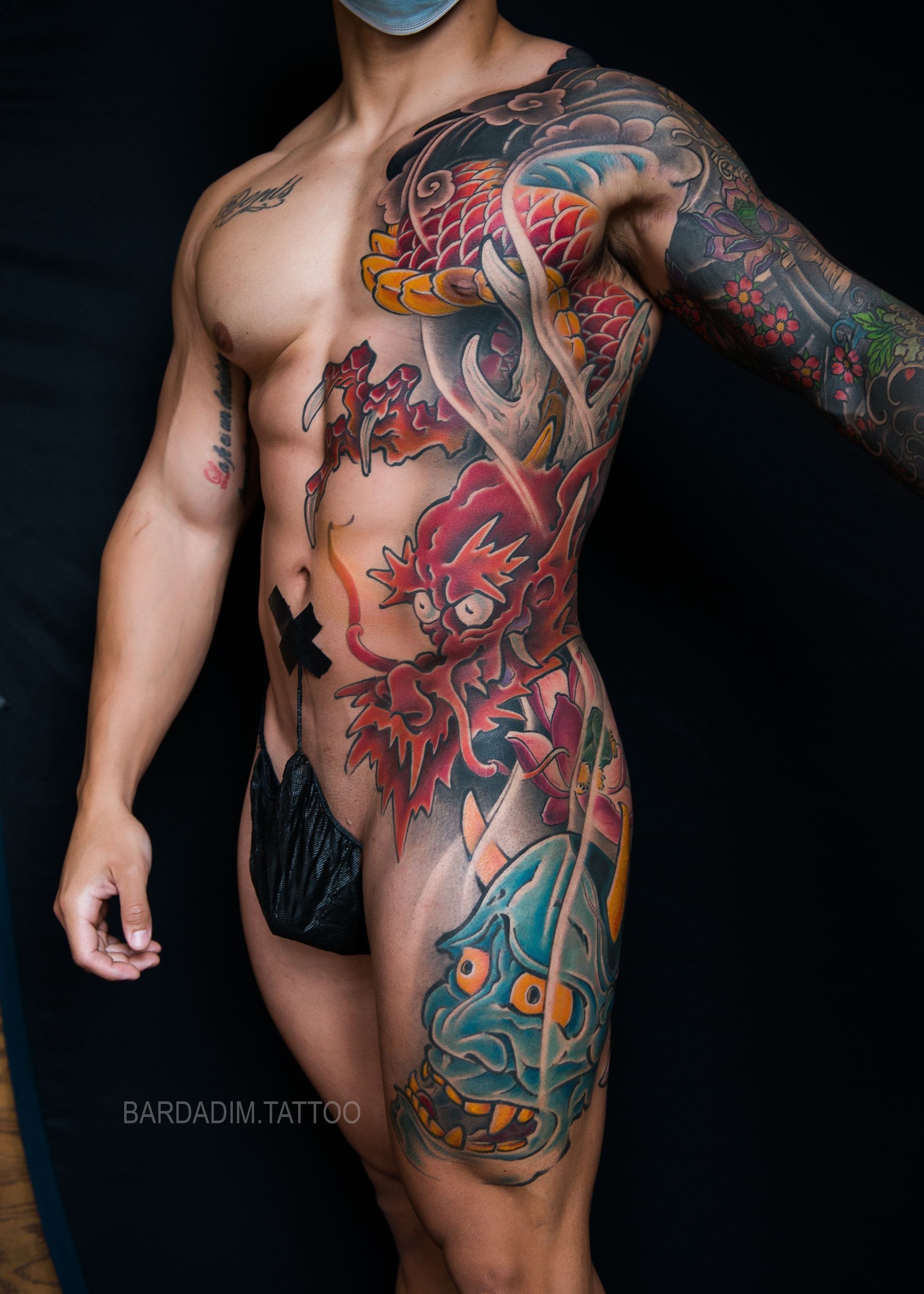Tattoo Style
Traditions
We hold a profound respect for Japanese tattoo traditions, which is why our focus is on the authentic style detailed here.
However, we have reimagined our approach to incorporate modern technical and stylistic elements, elevating our overall aesthetic.
Irezumi Types

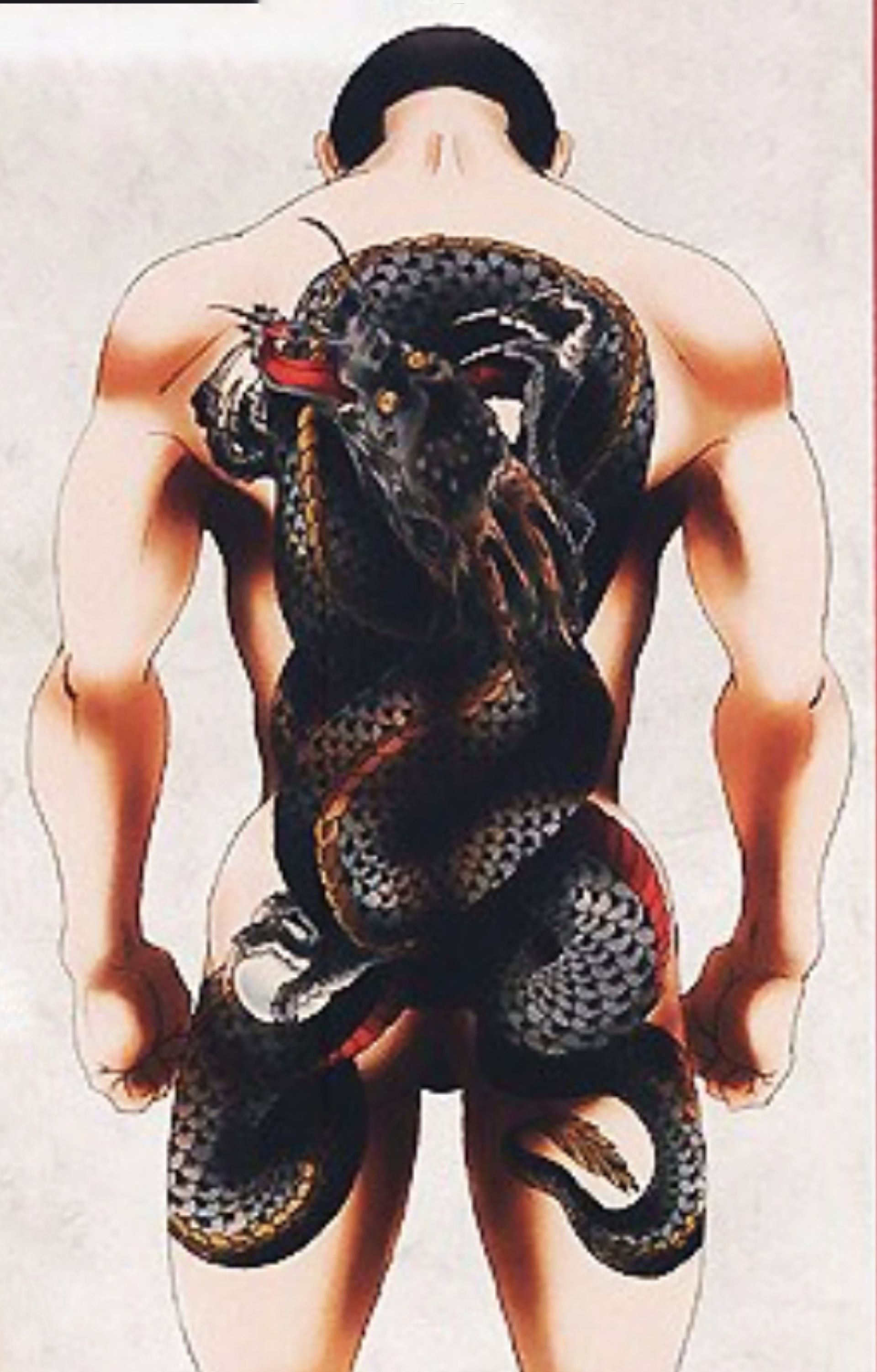
A tattoo design that features a dynamic background with patterns such as rocks, waves, water, wind bars, clouds, flowers, and other secondary elements. This artistry enhances the overall design, adding depth and complexity, resulting in a visually captivating piece filled with symbolism and meaning.
GAKU-BORI
Mikiri
The frames of Gaku-Bori in traditional Irezumi are called 'Mikiri.'
Gaku-bori tattoos are not standalone designs; they are expansive pieces that cover significant body areas, making their edges a crucial design element. Mikiri is essential in Irezumi and is integral to the initial design concept. Various styles exist, many named after natural motifs.
Matsuba Mikiri
Inspired by pine needles, it features a series of straight lines that form its border. This style is rarely found in modern Irezumi.
Mikiri Types
Features a wavy border inspired by the rounded petals of the botan (peony) flower. While rooted in floral design, it typically incorporates elements of waves and clouds, creating a graceful and fluid edge.
Botan-Giri
Features a sharply defined mikiri with a straight edge that resembles a clean slice made by a katana.
Bukkiri (or Butsu-Giri)
Akebono, meaning "daybreak," features a subtle border that gradually lightens in color, mimicking the soft transition of sunlight at dawn.
Akebono Mikiri
Literally meaning "gravel border," this design features an edge that gradually fades out with a series of small dots.
Jari Mikiri
Irezumi Layouts
Traditionally, Irezumi is based on a full body concept that is built in sections.
F.A.Q.
What is IREZUMI?
Irezumi is a traditional Japanese style of tattooing that is created using large scale motifs based on Japanese mythology and scenes from nature. Irezumi is known for its dark and vast backgrounds based on water, wind and clouds that encompasses the entire area around the main motif and fills the body part being tattooed, including the whole body except hands, feet, head, face and neck in the case of a proper traditional bodysuit.
Japanese tattoo(Irezumi)- one of the most popular style in modern tattooing. Being looking quite illustrative, it’s traditionally deeply symbolical. Every element of Japanese tattoo design has it’s particular meaning and purpose. In order to understand the design meaning, it is essential to understand the history and background of Japanese culture itself. Here is some interesting article regarding Irezumi Symbology
What is 'Irezumi Pattern'?
LEARN MORE >In traditional Irezumi, the tattoo design is based on a full-body concept. It is created in sections that correspond to different body parts. Each section has its own unique pattern that can be appreciated individually, but also fits together with the surrounding sections.
Can I get a small tattoo done in Irezumi style?
LEARN MORE >Technically yes, and this is called ‘one point tattoo’. In our studio we specialize in Gakubori – framed tattoo and do ONLY large scaled tattoos which take entire body part and naturally framed by that part of the body.
I'd like to get tattooed in Irezumi style, how can I get a consultation appointment?
GO AHEAD >It’s really easy to get your consultation, please learn the process and follow few simple steps.
Tattoo Notes
Japanese Tattoo Symbolism: Ideas, History, and Galleries
Explore tattoo ideas, historical facts, and publications on Japanese tattoo art. Discover Irezumi style guidelines, a comprehensive knowledge base, and captivating photo galleries.








